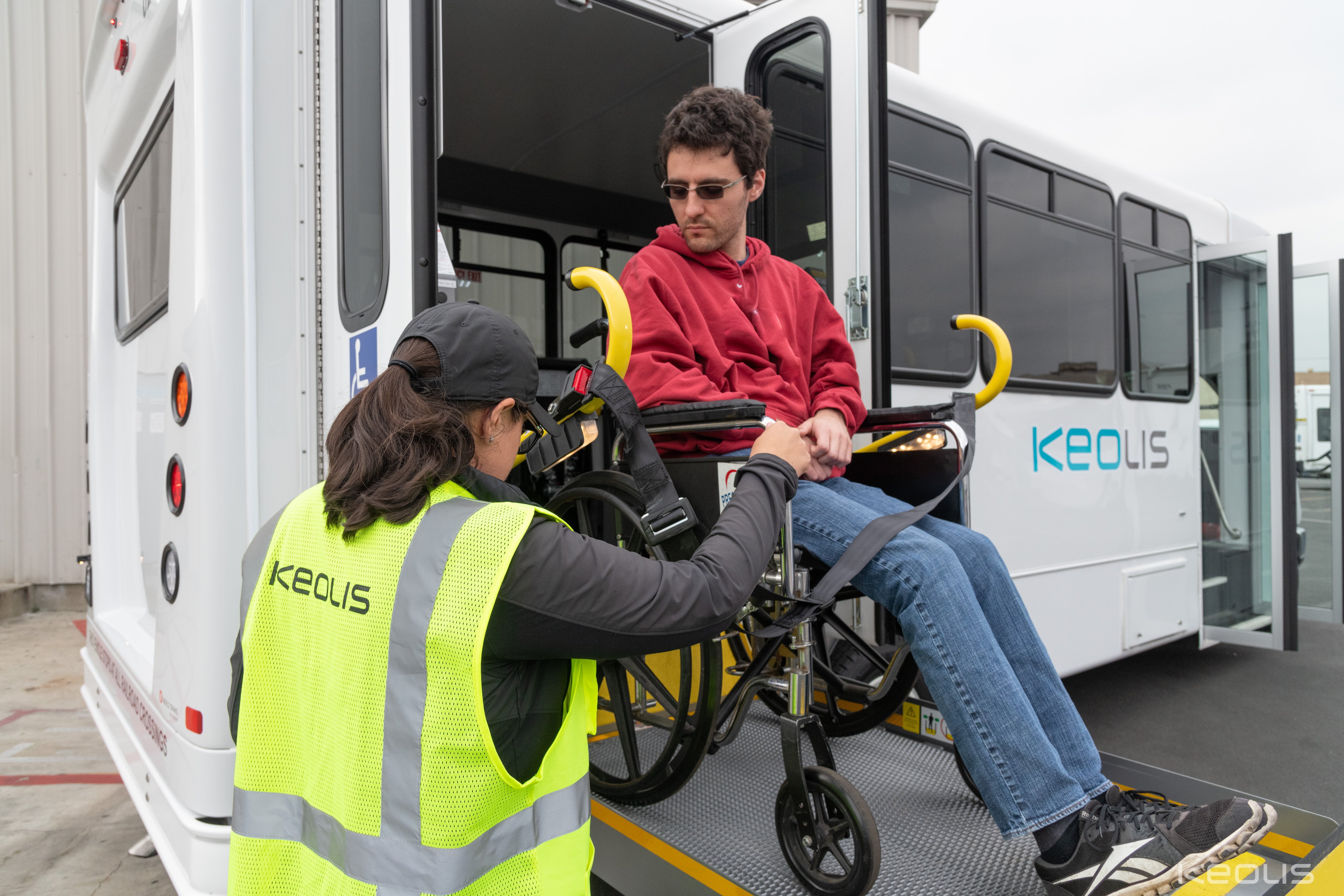4 min read
How Federal Infrastructure Funds Can Build More Accessible Transit
By: Aline Frantzen on Sep 23, 2022 2:48:00 PM

This article was originally featured in Route Fifty.
COMMENTARY | By taking significant steps towards increasing accessibility, public transit systems will better incorporate equity and social mobility into their operations.
According to the Centers for Disease Control and Prevention, as many as 61 million Americans live with some form of disability. Among those millions, one in five is blind or has a mobility disability. As such, nearly 30 million Americans travel less due to limited mobility, yet they disproportionately rely on public transit to get around.
Too often, investments in public transit have ignored the needs of its wide variety of riders. For example, most cities almost completely ignored wheelchair users until the late 1960s and early ‘70s. After demonstrations by disabled WW II veterans, Congress adopted the Architectural Barriers Act—a precursor to the 1990 Americans with Disabilities Act. Today, ramps and curb cuts are ubiquitous in cities and towns of all sizes—and they benefit a range of users beyond those in a wheelchair like the young, the old, people pushing strollers and the temporarily disabled.
For transit, the bipartisan infrastructure law signed into law by President Biden in November provides a once-in-a-generation opportunity to right this wrong by funding projects that will improve accessibility to public transit. It’s critical that policymakers and transit agencies get it right and prioritize projects that incorporate the concept of universal design to create inherently accessible transit and better serve all riders.
While universal design has been a key part of the accessible transit conversation in Europe for decades, there has been a groundswell of momentum towards embracing its principles in the United States in recent years. Most notably, the American Public Transportation Association published landmark guidelines in 2020 aimed at promoting equitable mobility services through universal design. Rather than targeting people without disabilities, universal design incorporates everyone’s needs. It’s more efficient, cost effective and equitable to ensure that users are able to move independently when possible rather than divide service into groups based on mobility.
The Infrastructure Investment and Jobs Act’s All Stations Accessibility Program, or ASAP, is a prime example of a funding opportunity that needs to be deployed with universal design in mind. ASAP makes possible capital improvements to upgrade legacy facilities that were previously outside agencies’ budgets through annual funding opportunities totaling $350 million for the next five years. Projects funded through ASAP and other BIL programs should help to develop transit systems that serve as many users as possible without the need for special accommodations.
With a focus on flexibility and the need to accommodate future changes in populations, universal design will not only broaden accessibility but also deliver long-term cost savings. Additionally, investing now will result in savings by reducing cost overruns for deferred maintenance, a persistent challenge for public transit agencies. According to the U.S. Department of Transportation estimates, there is a $105.1 billion backlog in deferred maintenance across public transit systems. And building fully accessible transit vehicles and facilities is often prohibitively expensive.
The funding from the law will enable us to address these challenges by putting the needs of users first, integrating all users under the same system, and investing in infrastructure that will serve both the current population and future generations.
Broadening What Accessibility Means
Applying universal design to all parts of a transit rider’s journey can broaden our thinking about what accessibility means. Traditional concepts of accessible design upgrades might be eliminating gaps between the train and the platform or installing elevators. However, often overlooked issues like wayfinding in stations, route planning and staff training also determine how accessible transit is for all users. Investing in these features ensures all users can ride both in theory and in practice.
Improving wayfinding starts with clearly and concisely presenting navigational information in stations, including deploying information in multiple formats to meet the needs of deaf and blind riders. For many, route planning has moved digital. New tools make it easy to plan and make timing adjustments on the go, but they are not always accessible to those with differing impairments and familiarity with technology. Technological advancements also allow us to simplify information about route accessibility and empower users to be confident in their ability to successfully complete a trip.
Prioritizing these features alongside the infrastructure law’s investments in physical infrastructure will help maximize its impact on accessibility.
Finally, investments in human capital help to make universal design principles run smoothly and fill in the gaps where needed. Funds in the law for workforce development in the transit industry will help improve employee training, leading to more empathetic service and improved rider experiences. This familiarity with customers’ needs helps put all at ease and reinforces the message that public transit is for everyone.
The law can be a watershed moment for investments in accessible public transit—but only if we learn from our experience and incorporate universal design at every phase of the process. While it would be impossible to design a system that works perfectly for every user, universal design is still a worthy guiding principle.
If we deploy investments correctly, public transit systems will take a significant step towards becoming inherently accessible and will strengthen their role as engines of equity and social mobility. In the process, we’ll quicken boarding, improve service, ease wayfinding and ameliorate interactions with transit staff benefiting all users.
Related Posts
How Public Transit Agencies Can Act on the Bipartisan Infrastructure Bill
This article was originally published on December 22, 2021 in Metro Magazine.
Addressing Transportation Inequality in Black Communities
Transportation has played a significant role in driving racial inequality in the United States. Our...
What the U.S. Can Learn from Global Transit Networks
The United States leads the world in vehicle miles traveled per capita, with Americans driving ...